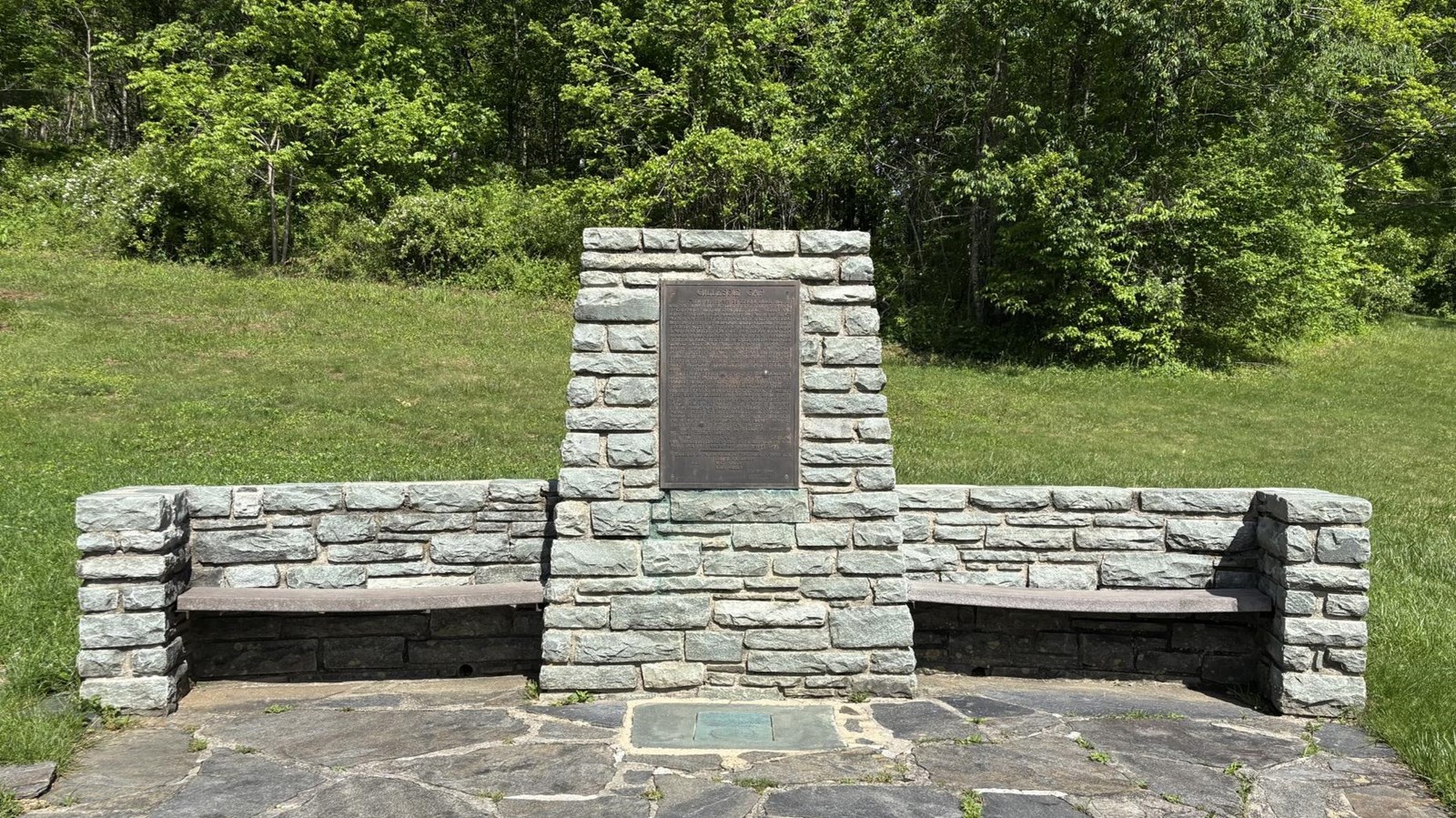Last updated: August 6, 2025
Place
Overmountain Men Monument at Gillespie Gap, Milepost 331

NPS Photo
Benches/Seating, Historical/Interpretive Information/Exhibits, Parking - Auto, Pets Allowed, Trailhead
At first, the Overmountain Men were reluctant to join the Patriot cause. British Major Patrick Ferguson warned the Overmountain Men. He said he would march over the mountains unless they promised loyalty to the king. This threat angered the Overmountain Men.
In response, they planned an attack against Major Ferguson. Troops gathered at Sycamore Shoals in Tennessee. This outpost is on the Watauga River, close to what is now Elizabethton. From there, they rode into the North Carolina mountains.
On the night of September 28, roughly 1,000 armed militiamen came to Grassy Creek, North Carolina. The men finished a hard 20-mile ride. They traveled from snowy Yellow Mountain, following Bright’s Trace. Their route took them along the North Toe River to Grassy Creek, near Spruce Pine, North Carolina. They were led by Colonel Isaac Shelby, Colonel John Sevier, Colonel William Campbell, and Colonel Charles McDowell.
At Grassy Creek, they found a great camping spot with fresh water for the men and horses. They cooked a simple meal of parched corn and finished their last beef rations. The next morning, the officers lined up their men, ordered them to mount their horses, and left camp.
Half the men rode with Colonel Campbell over the Blue Ridge Mountains. They passed through Gillespie and Lynn Gaps to gather intel from a suspected Loyalist, Henry Gillespie. They crossed the Blue Ridge near Spruce Pine, North Carolina. That night, on September 29, they camped close to the modern-day Museum of North Carolina Minerals on the Blue Ridge Parkway.
The other half, led by Colonel Shelby and Colonel Sevier, returned to the North Toe River. They followed Roses Creek to Hefner Gap, crossed the Blue Ridge, and descended into North Cove.
This monument honors the Overmountain Men. They traveled through this area to reach the Battle of Kings Mountain in South Carolina. Patriot forces killed Major Ferguson in that battle and defeated his army.
The monument has a bronze plaque. It honors the Overmountain Men, Francis Marion, and the 30th Infantry Division. These brave men broke the Hindenburg Line during World War One. It was first dedicated on July 4, 1927, near the intersection of Highway 26 and the Blue Ridge Parkway. At that time, the Blue Ridge Parkway did not exist in this area. In 1955, the Museum of North Carolina Minerals was built. That year, they also moved the monument to its current spot. In 1980, the National Park Service rededicated the monument. This marked the 200th anniversary of the Overmountain Men’s march. They added a rededication plaque in front of the original plaque.
Check out the Overmountain Victory National Historic Trail’s website to learn more about the Overmountain men and their journey.
- Duration:
- 2 minutes, 11 seconds
The Overmountain Victory Trail crosses what is now the Blue Ridge Parkway at Gillespie Gap. This trail follows the route the Overmountain Men took on their way to the eventual Battle of Kings Mountain in October of 1780. This battle was pivotal in the completion of the Revolutionary War and helped secure victory for Americans.
